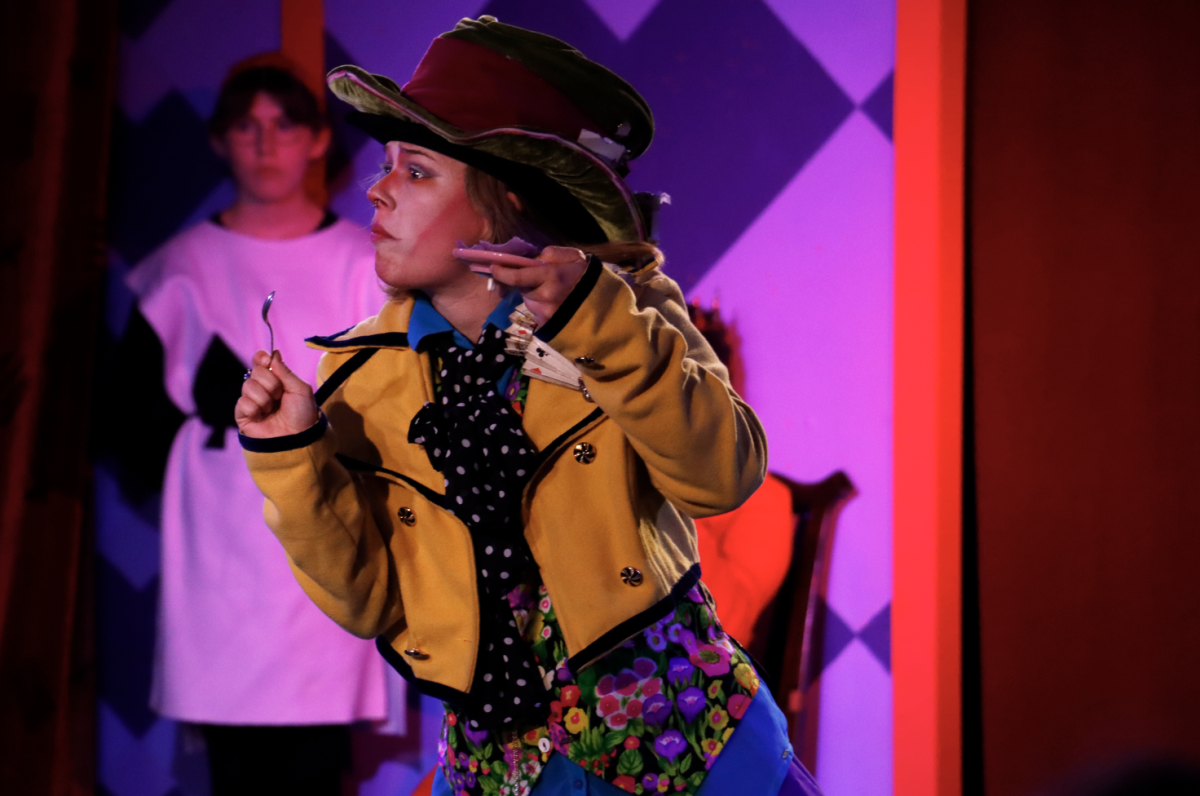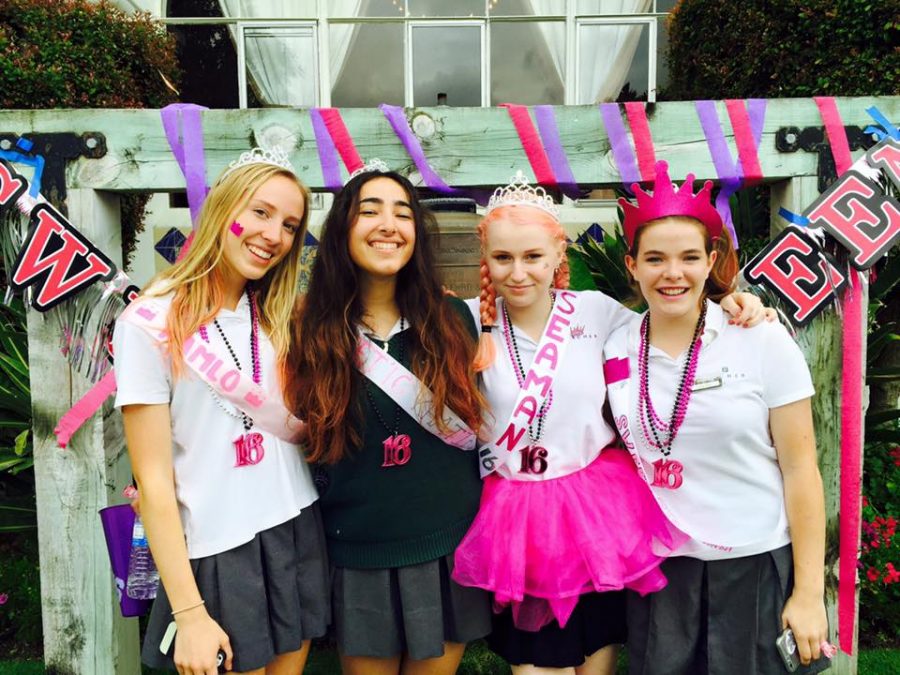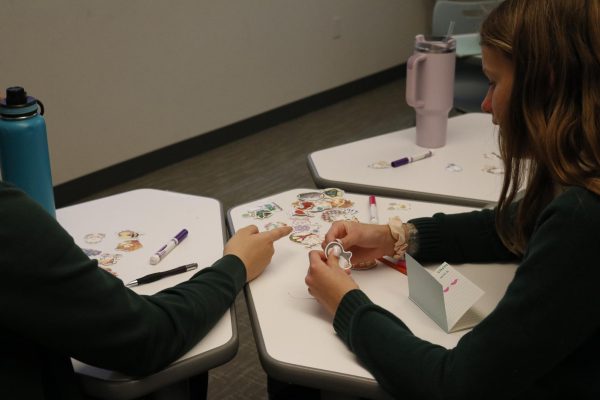Hair color blues: examining Archer’s hair color policy
During the last week of her sophomore year, Sara Seaman ’16 walked through Archer’s hallways covering her blue hair with a headscarf.
She had dyed her hair blue in anticipation for summer vacation, but having unnaturally colored hair goes against Archer’s handbook, which reads, “Hair style and color should appear natural.” The headscarf was a compromise between her and then Dean of Students Gretchen Warner since the school year was nearly through.
It is safe to say that for Seaman, the issue of hair color is personal.
During the first semester of her junior year, Seaman wanted to challenge Archer’s policy. After meeting with Warner, she decided to write up a formal proposal.
Warner said that the protocol for proposing a change to the handbook is fairly straightforward.
Anytime the students either have a question about or want to petition a change to the handbook, they are always welcome to write a proposal or write a petition and bring something like that to the dean of students,” she said.
Seaman’s proposal was not approved.
“It was a very thoughtfully written proposal and it was very seriously considered. It wasn’t as though it just got filed away and it was just ‘yes, yes, we’ll look into that.’ That was not at all what it was. The process was that once it went to me, I took it to the class deans for a full discussion, and it was a very robust discussion,” Warner said.
Hair style and color should appear natural.
— 2015-2016 Archer Student Handbook
Seaman remembers the reasoning behind the proposal’s rejection — at least as it was explained to her — as consisting of a few different lines of thought: 1. Hair color is distracting 2. Hair color is unprofessional and 3. Hair color is not consistent with the image of an Archer girl that Archer wants to represent.
“I feel like Archer as a school prides itself in being expressive and accepting and having students that embrace who they are and are truly unique. And I feel that the concept that abnormal hair color shouldn’t be allowed because it doesn’t fit the typical Archer girl or the ‘ideal Archer girl,’ as it’s put, places validation of a woman on her appearance instead of what she actually is and also suggests that there’s only one kind of Archer girl and that anything that doesn’t fit that criteria doesn’t fit in at Archer,” Seaman said.
Upper School Director Samantha Coyne-Donnel doesn’t remember Seaman’s proposal specifically but thinks the primary purpose of the hair color policy is to serve as a tool to maintain professionalism.
“I would say that the reasoning for that policy is that, in general, I think the school is aiming to have with the dress code a kind of a professional atmosphere in terms of what is generally accepted in a more professional culture,” Coyne said.
Warner echoed Coyne’s sentiments on professionalism.
“I think that’s in large part why we have a uniform in general. Our uniform relates to lots and lots of different things. It exists for lots and lots of different reasons, but part of it is being comfortable and professional, and hair dye is part of that,” she said.
French teacher Kate Webster has conflicting opinions about the professionalism of hair color. She recently returned to Archer, her alma-mater, from working in the fashion industry.
“I think it’s hard to have a singular definition of professional. It’s dependent on the field I think. And I think the way we define professionalism at large has been evolving over time. Not so long ago it was considered unprofessional to wear certain colors of nail polish or to not wear nylon stockings,” Webster said. “Professional is sort of a slippery, enigmatic term that can encompass a lot of different things but doesn’t necessarily have a concrete definition.”
I think the primary purpose of the uniform is to eliminate class differences in Archer girls. The uniform helps to create an unbiased learning environment, but I don’t think hair color serves the same purpose.
— Sara Seaman '16
Coyne also spoke to the fact that Archer adjusts when it notices a change in the professional climate, such as its decision a few years back to allow nose piercings. She also said that the uniform itself and Archer’s policies do tend to have a more “conservative bent.”
Seaman is a strong proponent of the uniform but sees the goals of the hair color policy as divergent from the goals of the uniform as a whole.
“I’m all for the uniform. I love the fact that we have a uniform,” Seaman said excitedly. “I think that it’s really important in what it does, but I don’t think that the color of your hair has the same goal. I think the primary purpose of the uniform is to eliminate class differences in Archer girls. The uniform helps to create an unbiased learning environment, but I don’t think hair color serves the same purpose. I don’t think that’s why we are supposed to have naturally colored hair in the handbook — that’s just for aesthetic purposes.”

When it comes to the idea of hair color being distracting, Webster isn’t sure how it would play out in a classroom setting.
“I understand where [the policy’s] coming from in the sense that I could see more vibrant hair color being distracting in class, and if the intention of having a uniform is sort of to take that element of distraction away a little bit I understand that. Though, at the same time, I wonder if exposure to a variety of less natural looking hair colors would eventually diminish the level of distraction. I’m not sure because I haven’t experienced it, but that’s sort of what I wonder.”
Seaman doesn’t think abnormally colored hair would be distracting.
“The concept that hair color is distracting is the silliest thing in the world to me. To be honest, people touch my [natural] blonde hair more than they touch my colored hair,” she said.
When asked why hair color is important to her, Seaman said it is “the idea of self-expression, the idea of being able to express myself through something that is literally attached to my body.”
She also finds the process of dying her hair to be incredibly therapeutic and cathartic. She views the process as a healthy way to release stress and create art at the same time.
Warner and Coyne also share the concern that allowing unnatural hair color perpetuates a focus on the superficial.
“I think that Archer girls are able to express themselves creatively in lots and lots of different ways and to say that that hair dye or hair color is the main route for which they would express their creativity is not giving Archer students enough credit,” Warner said.
I feel that the ultimate acts of self-expression are the qualities that students have internally and not externally, so to me what makes every Archer girl unique is their interests, their passions, their enthusiasm for different ideas, their love of learning.
— Samantha Coyne-Donnel, Upper School Director
“I feel that the ultimate acts of self-expression are the qualities that students have internally and not externally, so to me what makes every Archer girl unique is their interests, their passions, their enthusiasm for different ideas, their love of learning,” she said. “I guess I’m measuring that in more substantive measures than superficial qualities that I would say could be identified by a hair color or a piercing or something else,” Coyne said.
Seaman has a different outlook.
“Expressing yourself in one way doesn’t mean that that’s the only way you can express yourself or the only type of way you express yourself. Being able to dye your hair an artificial color does not say that that is the only way that you are creative and therefore does not put down the creative or artistic expression of an Archer girl,” she said. “It’s just another way you can express yourself with something that is literally a part of yourself.”

Sarah Wagner graduated in 2016. She was the Co-Editor-In-Chief of the Oracle in 2015-2016 along with Syd Stone. In her sophomore and junior years, she...




![Freshman Milan Earl and sophomore Lucy Kaplan sit with their grandparents at Archer’s annual Grandparents and Special Friends Day Friday, March 15. The event took place over three 75-minute sessions. “[I hope my grandparents] gain an understanding about what I do, Kaplan said, because I know they ask a lot of questions and can sort of see what I do in school and what the experience is like to be here.](https://archeroracle.org/wp-content/uploads/2024/03/grandparents-day-option-2-1200x800.jpg)
























































